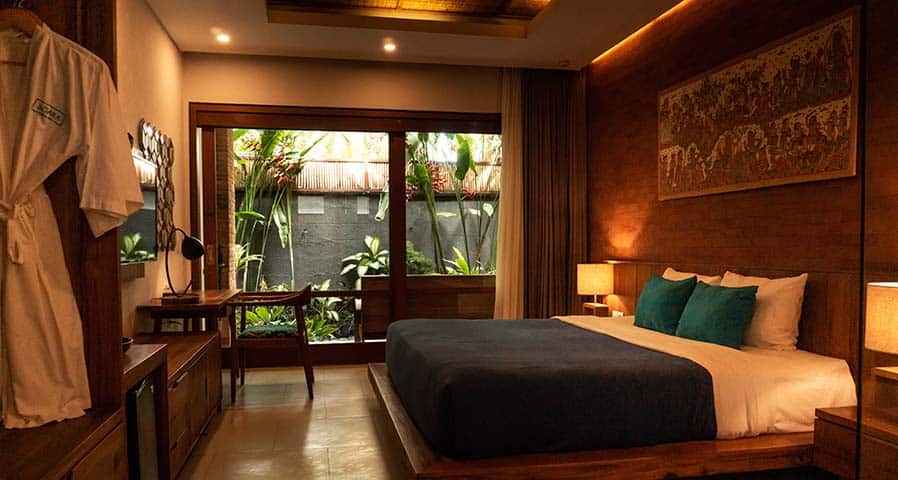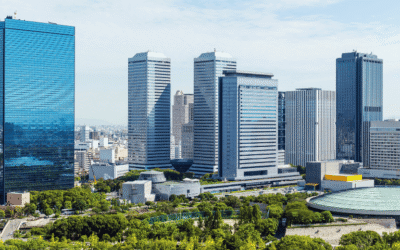According to lighting designer Robert Sonneman,
“LED lighting offers hoteliers a significantly more efficient model over incandescent and fluorescent lighting, including a greener profile and lower maintenance and electricity costs in addition to immense versatility for customizing guests’ experiences through lighting.”
Before upgrading your hotel lighting to LED, there are a few factors to consider.
LED Hotel Lighting Benefits and Considerations
Cost
Cost is a primary consideration for hotels. LEDs are more expensive than traditional bulbs, but the fixtures can provide long-term savings.
Robert Sonneman states,
“The long life, color, intensity, and controllability of LEDs have opened a totally new universe of opportunity, efficiency, and sustainability. A five-watt LED can produce 18 to 22 lumens per watt. In comparison, a conventional incandescent light bulb of 60–100 watts only emits around 15 lumens per watt. Today, LEDs can produce 300 lumens per watt and last 100,000 hours, and generally, most available LED systems produce 100 to 150 lumens per watt and last 50,000 hours.”
Since LEDs are long-lasting, hotel lighting designers can install the fixtures in hard-to-reach places. Architect Vickie Alani at CBT states,
“We can put lighting behind products, behind glass, on really high ceilings in ways that makes sense, but that doesn’t get constrained by how you access it as often. You’re going to renovate in three years, and the lights might still be working.”
While it depends on the type of LED bulb and its technology, most fixtures pay for themselves withing three to six months. Older LEDs can take up to three years before hotels see a return on their investment. Since hotels frequently change ownership, the shorter ROI on new model LEDs makes the bulbs worth the initial investment.
Versatility
LEDs are versatile. You can use the bulbs in contemporary or classic designs. The bulbs can replace incandescent bulbs and their small size means lighting designers do not have to hide the fixtures. It allows them to experiment with various designs.
“One of the beauties of LED is that we can take old designs and add a modern touch to them,” David Rauschuber, SVP of Craftmade, said. “A lot of boutique hotels want to have that look but they don’t want to have super-modern contemporary lighting, so we’re able to integrate the LED into the fixtures to bring them to modern times and have an old-world design [at the same time].”
Hotels can also adjust the brightness and color of LEDs and take advantage of other mood-enhancing features.
Maxwell Cohen, director of hospitality marketing for 2nd Ave Lighting states,
“Retrofit LED lamping is a great way to update any space and save energy. With new LED products surfacing daily, there is yet to be an application where they are inappropriate.”
“As LED technology continues to develop, we have been able to completely reimagine the forms, scale and application of luminaries. It has been creatively liberating to be able to think minimally in radically different ways and to realize these design visions without having to package large heat-generating bulbs.” —Robert Sonneman
Color-adjustable LED Lighting
Some LEDs allow you to adjust the color, going from warm to cool light in minutes.
David Rauschuber explains, “You can do the whole rainbow. On these types of fixtures, you can specify colors. An incandescent bulb is 2700k, up to LEDs, we can take them up to 5,000, which is almost blue. Everybody’s been specifying about a 3,000 temperature, which is not too blue. It’s a nice white.”
Understanding color temperature is crucial. When the light is too blue, a space can feel cold and when its too bright the light can appear yellow.
Properly adjusting the light’s color can improve comfort and give guests more control in their rooms.
Lois Goodell, principal and director of interior design at CBT explains,
“You can customize it to the way that you feel for what you need or what you’re doing. Are you working? Are you changing and getting ready for the evening? You can alter your environment.”
Vickie Alani provides an example of using color-adjustable LED lighting.
“I designed a lobby where we had a custom wall with some glazing that could be lit from beneath. The biggest issues was what color should we choose, and LED allows us to say, ‘just put in the LED strip and the color is up to you.’ We can do a sexy scene at night and a bright exciting scene during the day, and we can change the mood of the entire lobby through this wall, with this one tiny piece of technology. You don’t have to choose anymore, which is fantastic.”
Lighting designers also remind hotels to consider the flicker rate. Robert Sonneman recommends,
“LEDs do flicker, so you want to look for a flicker rate of less than 12 percent. And then the Color Rendering Index needs to be about 90—that’s the accuracy of the color over the life of the fixture.”
LED Lighting Upgrades for Hotels
If you want to learn more about LED lighting for hotels or are ready to replace your outdated incandescent lights, contact one of our lighting specialists to see how we can help.
Call 610-558-9773, email [email protected], or schedule a call that fits your needs by clicking the button below!









































0 Comments